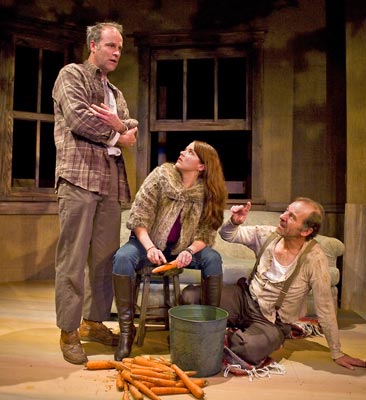An American Gothic Play from the 1970s
Buried Child, Sam Shepard's Best-Known Drama, Rides Again
Many audience members at Saturday night’s opening of Buried Child were left wondering if this grotesque tale, written by Sam Shepard and in this instance produced by the Ensemble Theatre Company, is an allegory, a fable, or a myth of the American psyche. Others wondered if they were laughing in all the wrong places. After all, the climax of the play revolves around an incident of infanticide.
Director Jonathan Fox paints a darkly humorous yet ultimately cathartic canvas in this story of the decline of American values that resonates even more powerfully now, in the midst of the current recession gripping the country. Fox deftly guides the extremely capable cast through the gothic labyrinth of a dysfunctional Midwestern family.

The patriarch, Dodge (Leonard Kelly-Young), is an alcoholic couch potato, and the mother, Halie (Anne Gee Byrd), is an adulteress with numerous affairs in her past, including one with her preacher (Lee Goncharoff). The two sons, Tilden (Geoffrey Lower) and Bradley (Louis Lotorto), are both broken-Bradley physically and Tilden mentally.
Shades of Willy Loman or perhaps King Lear haunt this macabre familial portrait.
Enter the prodigal grandson Vince (Graham Miller), who no one recognizes-not even his own father, Tilden. Vince’s inquisitive girlfriend Shelly (Kate Steele) seems to be the foil that will get the family to reveal the dark secret they have kept buried for so long in the backyard of their tortured minds. The inference in Buried Child is that the sins of the mother are visited upon the sons. Dodge reads his last will and testament and dies, and the grandson inherits a farm that surely is not for the meek.
Especially notable in this production is the spectacular lighting design by J. Kent Inasy. This highly memorable production of Buried Child seems to fit the definition of tragicomedy as a play at which one has to laugh to keep from crying.



